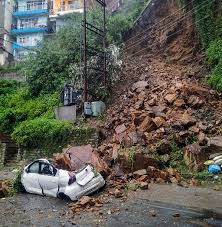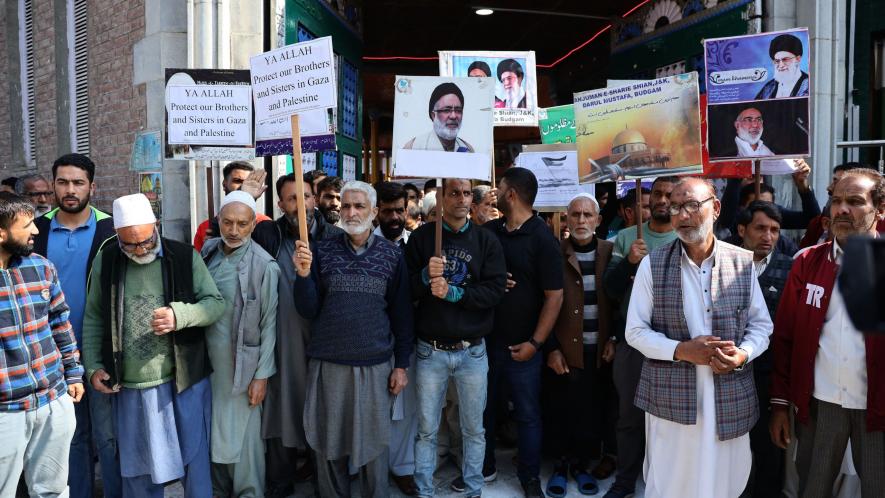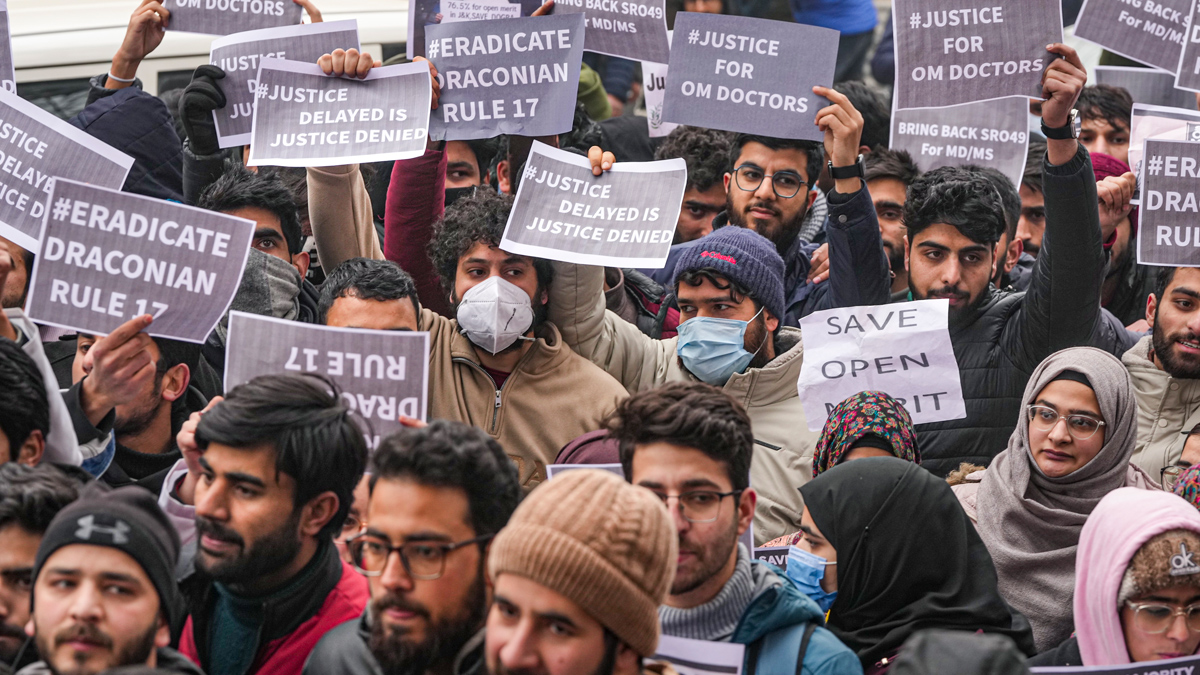A Paradise in Turmoil
By: Javid Amin | 27 Aug 2025
Jammu & Kashmir, often celebrated as the “Crown of India,” is now drowning in grief. What began as heavy August rainfall has snowballed into one of the worst natural calamities in recent memory. Torrential downpours triggered landslides, flash floods, and infrastructure collapse, leaving over 41 people dead, thousands displaced, and millions living in fear.
The human pain is unbearable: families torn apart, livelihoods wiped out, communication cut off, and pilgrimage routes—once symbols of faith—turned into zones of horror.
This isn’t just a seasonal monsoon story. It’s a warning that the Himalayas are changing, and with them, the fate of millions who call this fragile ecosystem home.
Key Developments at a Glance
-
Vaishno Devi Tragedy: Landslide near Adhkuwari kills 34 pilgrims, forcing suspension of the holy yatra.
-
Infrastructure Collapse: Bridges, homes, and highways destroyed; Jammu–Srinagar NH blocked, 18 trains cancelled.
-
Communication Breakdown: Mobile and broadband services down across Jammu region.
-
Evacuations: Thousands shifted to relief camps in Muthi, Satwari, and Kathua.
-
Climate Alarm: Experts warn of rising Himalayan temperatures and shifting western disturbances as root causes.
Vaishno Devi Yatra: From Faith to Fatality
The Vaishno Devi pilgrimage—a spiritual journey attracting millions each year—turned tragic when a massive landslide struck near Adhkuwari, killing at least 34 pilgrims and injuring dozens.
🙏 Faith Interrupted
Pilgrims who had been chanting hymns and climbing uphill suddenly found themselves running for their lives. Survivors recall scenes of chaos—boulders tumbling, people crushed under debris, and families torn apart in seconds.
Authorities have suspended the yatra indefinitely, focusing all energies on rescue and body recovery.
This tragedy underscores the danger of unregulated construction and inadequate slope protection in pilgrimage corridors.
Infrastructure Collapse: Valley Cut Off
Nature’s fury has torn apart roads, bridges, and power networks.
-
Jammu–Srinagar National Highway: Closed due to shooting stones, isolating the Valley from the rest of India.
-
Railways: At least 18 trains cancelled as tracks submerged or damaged.
-
Flights: Several delays and diversions due to poor visibility.
-
Local Roads: The Kishtwar–Padder and Jammu–Pathankot routes washed away.
Entire villages are now marooned, with only helicopters and boats offering lifelines.
Communication Breakdown: Voices Silenced
Chief Minister Omar Abdullah summed it up: “Almost non-existent communication.”
-
Mobile networks down in most districts.
-
Broadband services snapped, crippling access to weather updates or SOS calls.
-
Families cut off—parents in villages unable to contact children studying in Srinagar or Jammu.
In an age of connectivity, the blackout has intensified the psychological toll, leaving citizens both vulnerable and voiceless.
Evacuations & Relief Camps
Despite the chaos, rescue and relief operations are in full swing.
-
Army, NDRF, SDRF jointly conducting airlifts, boat rescues, and road clearances.
-
5,000+ people evacuated from flood-prone belts in Jammu, Kathua, and Udhampur.
-
Relief camps in Muthi and Satwari providing food, blankets, and medical care.
-
Community kitchens run by locals reflect Kashmir’s spirit of solidarity.
Yet, camps are overcrowded and understocked. The fear of disease outbreak looms large.
Rainfall Records Shattered
Nature’s numbers tell a grim story:
-
Jammu City: 11.7 inches of rain in 24 hours – breaking the 1973 record.
-
Tawi River: Surged to levels higher than 2014 floods, inundating riverbank homes.
-
Doda & Kathua: Rivers breached banks, sweeping away farmland and livestock.
Scientists note that such intense, localized rainfall matches patterns of climate-driven cloudbursts.
Strategic Implications: A Wake-Up Call
This disaster has ripple effects far beyond humanitarian losses.
Lessons for Policy & Planning
-
Urban Planning Reform: Stop unregulated construction in floodplains and pilgrimage corridors.
-
Early Warning Systems: Deploy real-time satellite monitoring and community sirens.
-
Climate-Resilient Infrastructure: Build roads and bridges to withstand Himalayan weather extremes.
-
Disaster Preparedness: Train communities for evacuation drills and first aid.
Ignoring these lessons will ensure that 2014 repeats itself again and again.
Human Stories: Faces Behind the Numbers
-
Rekha Devi (Kathua): “We lost our home, but my children’s lives were saved. That is all I have left.”
-
Imran (Kishtwar): “We had ten minutes before the landslide hit. I grabbed my mother’s hand and ran. Neighbors weren’t so lucky.”
-
Army officer in Rajouri: “We are working 18 hours a day. Every rescued child gives us the strength to continue.”
These stories humanize what could otherwise be reduced to data.
Climate Change & the Himalayan Crisis
Experts are clear: this is not just weather—it’s climate change.
-
Rising Himalayan temperatures are destabilizing slopes, increasing landslide frequency.
-
Western disturbances are shifting, bringing heavier rains in shorter spans.
-
Glacial melt adds more water to already swollen rivers.
Without urgent climate adaptation policies, Jammu & Kashmir may face yearly disasters.
Government Response
-
Schools & offices shut in affected districts.
-
Union Home Ministry in touch with J&K administration for additional funds.
-
Disaster Relief Fund activated for compensation.
-
Army & NDRF spearheading relief, with helicopters on standby.
However, criticism is mounting over preparedness gaps—why were pilgrims allowed on Vaishno Devi route despite heavy rainfall alerts?
Historical Context: Then & Now
-
2014 Kashmir Floods: 500+ dead, Srinagar underwater.
-
2022 Amarnath Cloudburst: 16 pilgrims dead.
-
2025 Disaster: Already 41+ dead, Vaishno Devi landslide worst in decades.
Clearly, the Valley is trapped in a cycle of recurring tragedies.
Bottom-Line: From Chaos to Change
Jammu & Kashmir today stands at a crossroads. The ongoing floods and landslides are not isolated misfortunes—they are signs of a region in climate distress.
If urban planning, climate adaptation, and disaster preparedness remain afterthoughts, the Himalayas will keep reminding us—with death and destruction.
As survivors struggle to rebuild, one message rings loud: We can’t stop the rain, but we can stop disasters from becoming tragedies.



